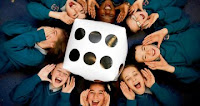The secrets of the chocolatier were revealed yesterday in a lecture Smart Chemistry – Tasty Food! given by Prof Dolores O’Riordan of University College Dublin.
Yes, it is sweet and there is cocoa in it but it all comes down to the fat said Prof O’Riordan who is based in the Institute of Food and Health. “The melting of the fat is very important,” she told a packed audience of students assembled for a Science Week presentation at the Science Gallery.
The chocolatier needs to do a bit of chemistry on the key fat, the cocoa butter, that makes chocolate the delight it is, she told them. Student attention was guaranteed as she lifted plates piled high with samples of the brown stuff with the possibility of a taste test always on the cards.
It all comes down to the size of “fat crystal” allowed to form during production, she said. Each has a different melting point, but the chocolatier wants a product that melts in the mouth, not in the hand and this means a large fat crystal, one that readily melts on the tongue at 33.8 degrees she said, as the plates bearing samples began to circulate the room.
Prof O’Riordan had a great deal more to tell her enthusiastic audience. “Essentially the food we eat is made of chemicals. We process the chemicals within the food to make them safe, to give them texture, to make them look and taste nice,” she said.
Chemistry can be used to modify colour, texture and even aroma, “and that all affects the food choices we make”, she said.
She nixed the widely held assumption that “e-numbers” that define additives, preservatives and artificial colours were all bad.
It was quite the opposite, she said, with tests showing they were safe.
Many still liked the idea of “natural” food colours, but few realised that the bright crimson dye often used in foods comes from the dried shell of the cochineal scale insect, she told them.
“Genes can also influence our preferences for food,” she said.
Article posted by Spencer Samaroo, Managing Director, Moo-Lolly-Bar
The best online chocolate, lolly and confectionery store on the web!
If you like what you have read check out our updates on Facebook and Twitter.
Source and Photo: Irish Times

No comments:
Post a Comment